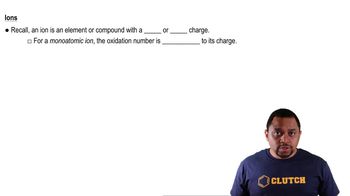Calculate Oxidation Numbers definitions Flashcards
 Back
BackCalculate Oxidation Numbers definitions
1/15
Terms in this set (15)
- Oxidation NumberIndicates an element's ability to gain, lose, or share electrons in its elemental or compound form.
- Redox ReactionsChemical reactions involving the transfer of electrons between two species, encompassing oxidation and reduction processes.
- Standard StateThe natural form of an element where its oxidation number is zero.
- Diatomic MoleculesMolecules composed of two atoms, such as H2, N2, O2, F2, Cl2, Br2, and I2, with an oxidation number of zero.
- CationsPositively charged ions formed when an element loses electrons.
- AnionsNegatively charged ions formed when an element gains electrons.
- Monoatomic IonAn ion consisting of a single atom with an oxidation number equal to its charge.
- PeroxideA compound with two oxygen atoms bonded together, typically with an oxidation number of -1 for oxygen.
- SuperoxideA compound with one oxygen atom bonded to a group 1A element, with an oxidation number of -1/2 for oxygen.
- Group 1A ElementsElements with an oxidation number of +1 when bonded to other elements.
- Group 2A ElementsElements with an oxidation number of +2 when bonded to other elements.
- Group 7A ElementsElements like chlorine, bromine, and iodine with an oxidation number of -1, except when bonded to oxygen.
- HydrogenHas an oxidation number of +1 when bonded to nonmetals and -1 when bonded to metals.
- OxygenTypically has an oxidation number of -2, except in peroxides and superoxides.
- Noble GasesElements that typically have no charge due to their stable electron configuration.



